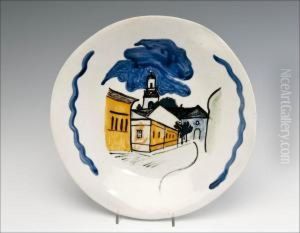Gerda Thesleff Paintings
Gerda Thesleff was a Finnish painter and one of the early representatives of modernism in Finnish art. Born on August 30, 1867, in Helsinki, Finland, she was one of the prominent figures in the Finnish art scene around the turn of the 20th century. Thesleff's artistic career was marked by a continuous search for new means of expression, which led her to explore various styles and techniques throughout her life.
Gerda Thesleff's family was supportive of her artistic ambitions, which was somewhat unusual for the time, especially for women. She began her formal training at the Finnish Art Society's drawing school in the late 1880s and later continued her studies abroad, which was a common practice for Finnish artists of the period. She spent time in France and Italy, where she was exposed to contemporary art movements such as Impressionism and Symbolism, which influenced her work significantly.
Throughout her career, Thesleff exhibited a strong affinity for color and light, and her work often featured landscapes, portraits, and still lifes. She was particularly skilled in pastels, a medium that allowed her to capture the delicate interplay of light and shade. Her style evolved over the years, reflecting her exposure to different artistic movements and her personal artistic exploration.
Thesleff was part of the Septem group, which was formed in 1912 and included other prominent Finnish artists like Alfred William Finch and Verner Thomé. The group was known for introducing Post-Impressionist ideas to Finnish art. Despite her association with various groups and movements, Thesleff maintained a degree of independence in her art, often diverging from prevailing trends to follow her own creative instincts.
Gerda Thesleff's work has been recognized posthumously with exhibitions dedicated to her art. Her contribution to Finnish modernism and her role as a pioneering female artist in a male-dominated field have been increasingly acknowledged. She passed away on January 13, 1944, in Stockholm, Sweden, leaving behind a legacy of artistic innovation and a body of work that continues to be appreciated for its vibrant colors and expressive quality.
